Why is Website Speed a Necessity?

In today’s fast-paced world, where every second can be the difference between success and failure for an online business, fast website design has become more than an advantage; it’s a necessity.
Have you ever wondered why some websites load instantly while others make you wait? This difference isn’t solely due to content volume; it stems from optimization and attention to speed.
Today’s user is very impatient and will immediately leave a site if they encounter delays.
This phenomenon, known as Bounce Rate, directly impacts your site’s ranking in search engines.
For this reason, a deep understanding of the factors affecting speed and the implementation of correct strategies for fast website design is crucial.
#Website_speed_optimization not only improves user experience but is also directly tied to #SEO and business success.
A slow website can drive potential visitors to competitors and reduce profitability.
This is a thought-provoking question: Are you really willing to lose your customers for a few seconds of delay? The answer is clear; no business accepts such a risk.
Therefore, from the very beginning, you should consider speed as a core pillar in your fast website design process.
This is an educational and explanatory approach to understanding the importance of how speed is considered the cornerstone of success in the digital space.
Does your current e-commerce website design not generate the sales you expect?
Rasaweb is an expert in professional e-commerce website design!
✅ An attractive and user-friendly site aimed at increasing sales
✅ High speed and security for an ideal shopping experience⚡ Get free online store design consultation with Rasaweb!
Countless Benefits of Website Speed for SEO and User Experience
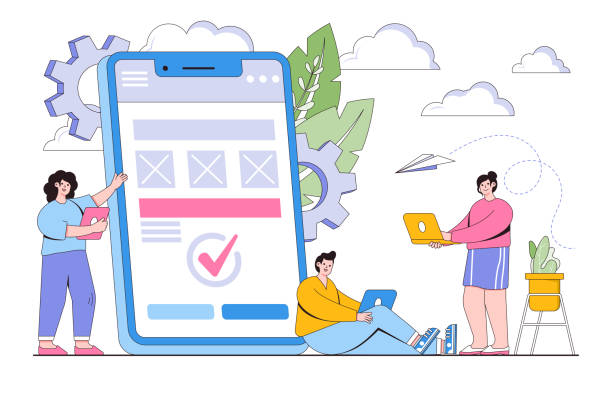
Website loading speed, beyond a technical factor, has become a key factor in SEO (Search Engine Optimization).
Google and other search engines consider website speed as an important criterion for page ranking.
Websites that load faster offer a better user experience and, as a result, achieve higher positions in search results.
This means increased visibility, attracting more traffic, and ultimately, business growth.
When it comes to fast website design, its impact on SEO cannot be overlooked.
On the other hand, user experience (UX) is heavily influenced by website speed.
Today’s users have high expectations, and the slightest delay can disappoint them.
A fast-loading website not only prevents user abandonment but also encourages them to spend more time on your site, view more pages, and ultimately, engage more.
This improvement in UX means a reduced bounce rate, increased time on site, and higher conversion rates.
An analytical approach shows that every second of loading delay can lead to a significant decrease in conversions.
Therefore, the importance of fast website design for retaining and attracting customers and improving SEO ranking is undeniable.
This topic is an essential guide for anyone looking to have a successful online presence.
Investing in fast website design is, in fact, an investment in the future of your business, as it directly impacts SEO performance and user satisfaction.
Speed optimization is not just a technical measure but also a powerful marketing strategy.
Key Factors Influencing Website Loading Speed
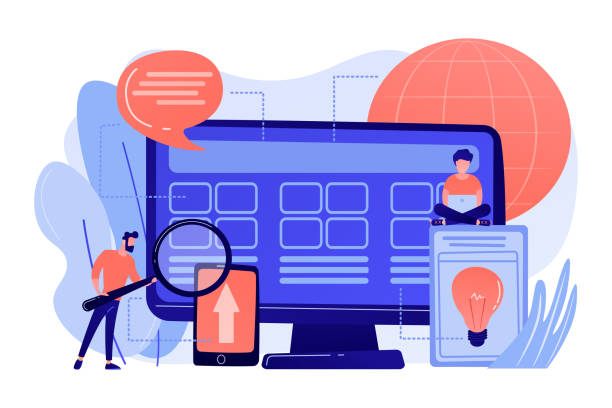
To achieve fast website design, understanding and managing the factors influencing loading speed is essential.
One of the most important factors is hosting or web hosting.
An inappropriate host with slow servers or limited resources, even with excellent site code optimizations, can still reduce overall speed.
Choosing a reliable hosting provider that suits your website’s needs is the first step towards fast website design.
Another factor is the size and optimization of images and media.
High-quality, large-sized images can severely slow down website loading.
Using optimized image formats (such as WebP) and compressing images without noticeable quality loss plays a key role in reducing loading time.
Furthermore, inappropriate coding, including the use of bulky and unoptimized JavaScript and CSS codes, can significantly slow down the site.
Minification of codes and combining files are specialized solutions to combat this issue.
Finally, the use of a Content Delivery Network (CDN) is also a factor affecting speed.
CDN, by caching your site’s content on multiple distributed servers worldwide, allows users to access content from the server closest to them, significantly reducing loading time.
This is a specialized and educational content that helps you pay attention to all technical aspects during the fast website design process.
Comparison of Hosting Types and Their Impact on Speed
| Hosting Type | Advantages | Disadvantages | Impact on Speed |
|---|---|---|---|
| Shared Hosting | Cost-effective, easy setup | Limited resources, affected by other sites | Medium to Slow (depending on traffic) |
| VPS (Virtual Private Server) | Dedicated resources, high flexibility | Requires more technical knowledge, more expensive than shared | Good (more resources) |
| Cloud Hosting | High scalability, excellent stability | More complexity, variable cost | Excellent (load distribution) |
| Dedicated Server | Full control, highest performance | Most expensive, requires specialized management | Outstanding (full resources) |
Speed Measurement Tools and Interpretation of Results

After implementing fast website design techniques, the next step is to measure and monitor its performance.
Fortunately, powerful tools exist for this purpose, helping you identify your site’s speed strengths and weaknesses.
Among the most commonly used tools are Google PageSpeed Insights, GTmetrix, and Lighthouse.
These tools not only provide an overall speed score but also offer detailed reports on factors negatively affecting speed and suggest solutions for improvement.
To use these tools, simply enter your website address and wait for the analysis.
Results include metrics such as Fully Loaded Time, Largest Contentful Paint – LCP, First Input Delay – FID, and Cumulative Layout Shift – CLS, which are considered Google’s main Core Web Vitals.
Interpreting these results is crucial; a green score means good performance, while yellow and red scores indicate the need for further optimization.
This is a comprehensive guide that helps you continuously monitor your site’s speed performance and move towards a fast and optimized website design.
Remember that speed optimization is an ongoing process and requires review and updates with changes in content and technology.
Regular use of these tools is an integral part of maintaining a high-performance website strategy.
These tools help you progress step by step towards fast website design and provide a flawless user experience.
Did you know that 94% of a first impression of a company is related to its website design?
Rasaweb, by offering professional corporate website design services, helps you create the best first impression.
✅ Create a professional and trustworthy image for your brand
✅ Easier attraction of potential customers and improved online standing
⚡ Get free corporate website design consultation now!
Front-end Optimization Techniques for More Speed
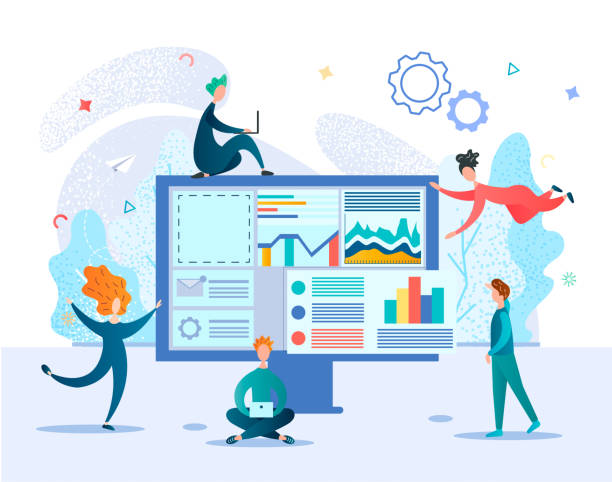
Front-end optimization is one of the most important parts of the fast website design process, as it directly affects the end-user experience.
One of the first steps in this regard is image optimization.
High-quality images with small file sizes significantly increase loading speed.
Using modern formats like WebP, compression with online tools or CMS plugins, and using `srcset` for responsive images are among the educational and specialized solutions in this area.
Another topic is Lazy Loading.
With this technique, images and videos are only loaded when the user scrolls to the relevant section of the page.
This makes the initial page load much lighter and noticeably increases initial loading speed.
Also, Browser Caching plays a vital role in reducing loading time for repeat visits.
By using browser caching, static files such as CSS, JavaScript, and images are stored during the user’s first visit and are loaded from the local cache on subsequent visits, which significantly increases speed.
Finally, Minification and Concatenation of CSS and JavaScript files are also important techniques.
Minification means removing whitespace, comments, and extra characters from the code without changing its functionality.
Concatenation also means combining multiple CSS or JavaScript files into a single file to reduce the number of HTTP requests.
These specialized approaches collectively contribute significantly to fast website design and provide a smooth user experience.
Back-end and Server-Side Optimization Techniques

Alongside front-end optimization, improving back-end and server-side performance is also highly important for achieving fast website design.
A strong and optimized back-end minimizes Server Response Time, which is itself one of the most important factors for website speed.
One of the primary solutions in this area is Database Optimization.
A database that is not properly indexed or has inefficient queries can lead to long delays in page loading.
Optimizing queries, cleaning up redundant data, and using database caching tools are among the specialized measures in this field.
Server-Side Caching is another powerful solution.
Instead of the server generating page content from scratch every time, it can store a cached version and serve it quickly on subsequent requests.
This technique has a tremendous impact on speed, especially for high-traffic websites.
Furthermore, using optimized and efficient coding in server-side programming languages (such as PHP, Python, Node.js) is crucial.
Avoiding infinite loops, optimizing algorithms, and using lightweight frameworks are among the educational tips in this area.
Choosing the right server and configuring it correctly is also effective in fast website design.
Using high-speed web servers like Nginx or LiteSpeed instead of Apache, as well as enabling Gzip compression on the server, can reduce the volume of transmitted data and increase speed.
These specialized and analytical measures ensure that your site is optimized for high speed not only in terms of front-end but also infrastructure.
Choosing the Right Platform and Content Management System for Speed
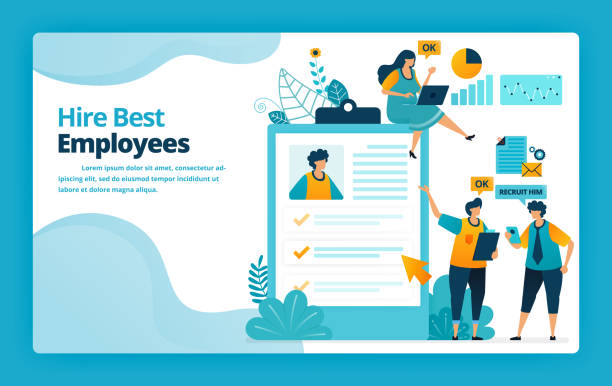
One of the initial and crucial decisions on the path to fast website design is choosing the right platform or Content Management System (CMS).
The right choice can lay the foundation for a high-performance website, while a wrong choice might create serious obstacles for speed optimization.
Popular Content Management Systems like WordPress, Joomla, or Drupal each have their own advantages and disadvantages.
WordPress is a popular choice due to its flexibility and numerous speed optimization plugins, but if not managed correctly (using heavy themes or too many plugins), it can itself become a slowing factor.
For a fast website design, attention should be paid to aspects such as optimized and lightweight CMS coding, its default load, and its ecosystem of plugins and themes.
Some platforms are inherently lighter and offer more optimizations.
For example, building a site with completely custom coding (Custom Development) can lead to the highest speed, as there is no extra code or unused functionality.
However, this approach requires high technical expertise and more time, and it is not suitable for all businesses.
It is recommended that before making a final choice, you carefully assess your project’s needs and evaluate each platform’s capabilities from a speed perspective.
Many CMSs have internal caching and optimization plugins and tools that can help achieve fast website design.
This is a practical guide that helps you make the best decision for your website’s infrastructure and pave the way for high speed from the outset.
Comparison of Content Management Systems by Speed Potential
| CMS | Ease of Setup | Speed Potential | Optimization Needs |
|---|---|---|---|
| WordPress | Very Easy | Medium to Excellent (with plugins) | High (caching and optimization plugins) |
| Joomla | Medium | Medium to Good | Medium |
| Drupal | Complex | Good to Excellent | Medium |
| Custom Development | Very Complex | Highest Potential | Depends on coding quality |
Impact of Website Speed on Online Businesses and E-commerce Stores

In the competitive world of online businesses, where online stores hold a large market share, fast website design is a critical factor for survival and growth.
Even a few hundred milliseconds of delay in page loading can mean losing potential customers and a sharp decrease in revenue.
Studies have shown that users in online stores react strongly to speed, and any slowness leads to shopping cart abandonment and an increased bounce rate.
This is a news and analytical topic that directly affects businesses’ financial performance.
For online stores, speed directly impacts not only user experience but also Conversion Rate.
A website that displays products quickly and streamlines the purchasing process has a greater chance of completing transactions.
Furthermore, site speed gains double importance on mobile platforms, as a large portion of traffic and purchases occur via mobile.
Therefore, fast website design and mobile optimization (Mobile-first optimization) should be prioritized.
Following Google’s latest updates, especially with the emphasis on Core Web Vitals, website speed has officially become a ranking factor.
This means that if your e-commerce site is slow, you will not only lose customers but also be pushed lower in search results.
Therefore, investing in fast website design and its continuous maintenance is a smart strategy to ensure success and profitability in the e-commerce space.
How much does losing business leads due to an unprofessional site cost you? Solve this problem forever with professional corporate website design by Rasaweb!
✅ Increase credibility and trust of potential customers
✅ Easier attraction of new business leads
⚡ Get free consultation right now!
Common Mistakes in Speed Optimization and Solutions to Avoid Them
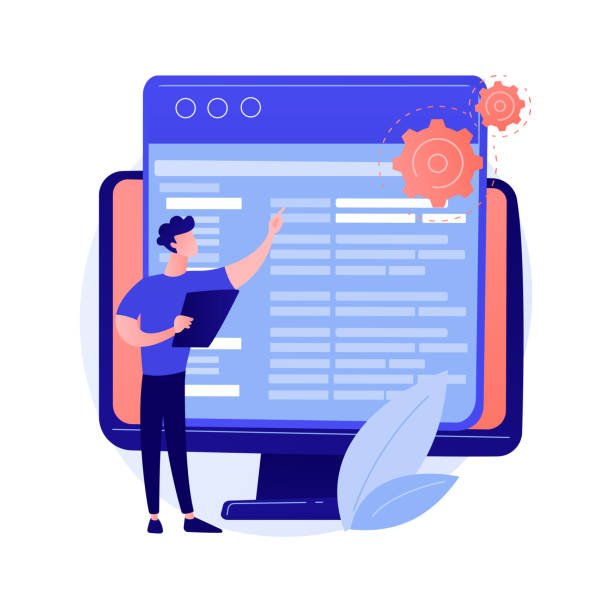
Even with the best intentions and efforts for fast website design, mistakes can occur that affect website performance.
Recognizing these common mistakes and knowing solutions to avoid them can help you navigate the speed optimization path more efficiently.
One of the biggest mistakes is overuse of plugins and scripts.
Every extra plugin or script adds an additional burden on the server and the user’s browser, which can lead to significant slowdowns.
Therefore, before installing any plugin, evaluate its necessity and choose lightweight and optimized versions.
Another mistake is lack of image optimization.
Many web designers upload images without proper compression or resizing, which drastically increases page size.
As mentioned earlier, using compression tools and appropriate image formats is crucial.
Also, neglecting caching (both server-side and browser-side) can lead to repeated resource loading and site sluggishness.
Not choosing suitable hosting is also a fatal mistake.
Cheap shared hosting might seem tempting initially, but in the long run, it can sacrifice your site’s performance.
This is a thought-provoking and guiding content: Is the lower initial cost worth losing users and SEO ranking? The answer to this question is clear.
Also, failure to regularly update CMS and plugins can lead to security issues and reduced speed.
Speed optimization is an ongoing process and requires maintenance and monitoring.
By avoiding these common mistakes, you can achieve greater success on the path to fast website design.
The Importance of Responsive Design and Mobile Speed

In the current era, where the majority of internet access occurs via mobile devices, Responsive Website Design and mobile speed are no longer an option but an absolute necessity.
Google has long applied Mobile-First Indexing for most websites, meaning your site’s mobile version will be the basis for ranking in search results.
Therefore, any slowness in the mobile version directly impacts your overall SEO ranking.
Mobile users typically have more variable internet connections, and their device battery life is also limited.
For this reason, their expectation for faster page loading is even higher than that of desktop users.
Fast website design for mobile includes optimizing images for smaller screen sizes, using lighter codes, and minimizing HTTP requests.
Furthermore, correct implementation of Core Web Vitals features focused on mobile user experience (such as LCP, FID, CLS) is highly important.
An analytical approach shows that slow websites on mobile have a much higher bounce rate and lead to the loss of potential customers.
This issue is particularly crucial for e-commerce businesses, as many online purchases are made via mobile.
Therefore, in the fast website design process, a mobile-first approach should be adopted from the outset, ensuring that all optimizations also apply to the user experience on smaller devices.
This is an essential part of any modern web strategy.
Frequently Asked Questions
| Row | Question | Answer |
|---|---|---|
| 1 | What is meant by fast website design? | Fast website design refers to a process where a functional and optimized website is launched in the shortest possible time, without sacrificing its quality or efficiency. |
| 2 | What factors are effective in website design speed? | Using ready-made Content Management Systems (CMS) like WordPress, ready and optimized templates, visual design tools, designer’s experience, and effective communication with the client. |
| 3 | Does fast website design always mean reduced quality? | No, with proper planning, use of optimized tools, and standard techniques, a high-quality website can be designed in a short time. |
| 4 | What types of websites are more suitable for fast design? | Small corporate websites, blogs, online resumes, landing pages, and e-commerce stores with limited products. |
| 5 | What is the role of CMSs (like WordPress) in fast design? | CMSs significantly speed up the design and development process by providing templates, plugins, and an easy-to-use administration panel. |
| 6 | Does fast website design cost less? | Usually, yes. Due to reduced designer working time and the use of ready-made resources, costs can be significantly reduced. |
| 7 | What client information is needed for fast design? | Contact information, logo, textual content, images, website goals, and any specific customization needs. |
| 8 | Do fast-designed websites have the potential for future development? | Yes, especially if they are built with popular CMSs like WordPress, new features can be easily added to them in the future. |
| 9 | What advantages does fast website design offer businesses? | Faster market entry, testing new ideas with minimal risk, reduced costs, and the possibility of launching immediate marketing campaigns. |
| 10 | What is the difference between fast website design and “ready-made website”? | Fast design involves the process of designing and implementing based on client needs, although it uses ready-made tools. However, a “ready-made website” usually refers to platforms where you simply input your information and receive a pre-defined site. |
And other services of Rasa Web Advertising Agency in the field of advertising
Smart Sales Automation: Designed for businesses looking to analyze customer behavior through SEO-driven content strategy.
Smart Google Ads: An effective tool to increase website traffic with the help of marketing automation.
Smart Conversion Rate Optimization: A new service for increasing sales through Google Ads management.
Smart SEO: An innovative platform for improving online growth with intelligent data analysis.
Smart Website Development: A professional solution for online growth focusing on SEO-driven content strategy.
And over a hundred other services in the field of internet advertising, advertising consultation, and organizational solutions
Internet Advertising | Advertising Strategy | Advertorials
Resources
Website Speed OptimizationThe Importance of Speed in Web DesignImpact of Site Speed on SEOFast Website Design: Why is it Important?
? To elevate your business in the digital world, Rasaweb Afarin Digital Marketing Agency, specializing in fast and professional website design, SEO, and advertising campaign management, is ready to accompany you to achieve the best results.
📍 Tehran, Mirdamad Street, Next to Central Bank, Kazeroun Jonoubi Alley, Ramin Alley, Plaque 6

